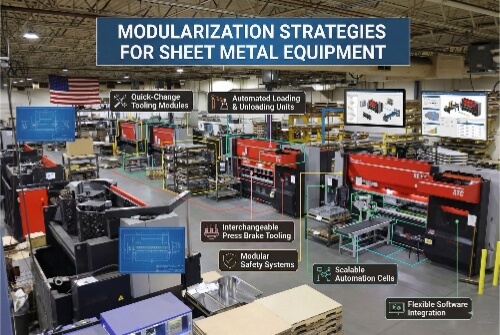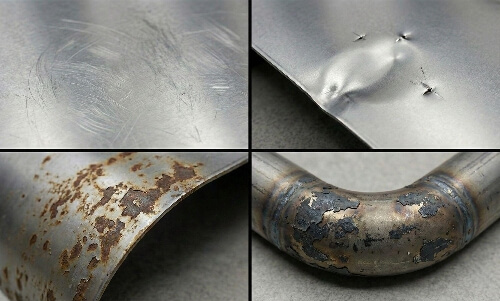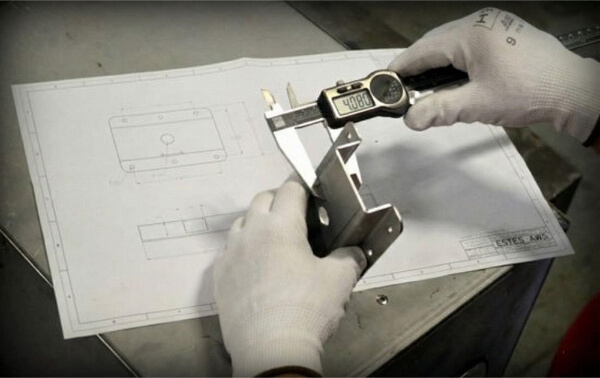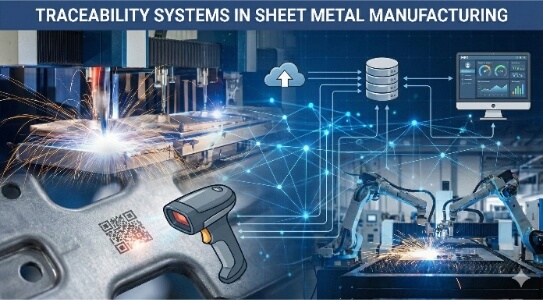고품질의 정확한 가공 결과를 얻을 수 있는 신뢰할 수 있는 방법을 찾고 계신가요? CNC 정밀 가공은 부품을 빠르고 정밀하게 생산하는 데 이상적인 방법입니다. 정확도가 뛰어나고 효율성이 높아 많은 산업 분야에서 널리 사용되고 있습니다.
이 글에서는 CNC 정밀 가공의 주요 측면, 사용되는 기계의 유형 및 비즈니스에 대한 이점에 대해 설명합니다. 엔지니어, 디자이너, 소규모 비즈니스 소유자 모두에게 이 방법을 통해 제조 공정을 개선하는 방법에 대한 유용한 정보를 찾을 수 있습니다.
CNC 정밀 가공이란 무엇인가요?
CNC 정밀 가공은 컴퓨터 수치 제어 가공의 약자입니다. 사전 프로그래밍된 컴퓨터 소프트웨어가 공장 공구와 기계의 움직임을 제어하는 제조 공정입니다. 이 프로세스는 그라인더와 선반에서 밀과 라우터에 이르기까지 다양하고 복잡한 기계를 제어할 수 있습니다.
CNC 가공의 원리는 자동화입니다. 수동으로 기계를 조작하는 대신 컴퓨터가 기계를 제어합니다. 이를 통해 정확하고 일관되며 반복 가능한 움직임이 가능합니다. 컴퓨터는 G-코드라고 하는 일련의 지침을 따르며, 이는 어디로 이동할지, 얼마나 빨리 갈지, 어떤 경로를 따를지 등 기계의 동작을 지시합니다.
CNC 정밀 가공 공정에 대한 단계별 가이드
정밀 부품을 만드는 데 어떤 과정이 필요한지 궁금한 적이 있나요? 이 단계별 가이드를 따라 CNC 가공이 원자재를 고품질 부품으로 변환하는 방법을 이해해 보세요.
1단계: 디자인 및 엔지니어링
이 프로세스는 CAD 소프트웨어를 사용하여 부품의 세부 설계를 생성하는 것으로 시작됩니다. 엔지니어는 부품의 치수, 모양, 특징을 정의합니다.
2단계: CAM 및 CNC 프로그래밍
디자인이 완성되면 CAM 소프트웨어로 가져옵니다. 여기서 설계는 CNC 기계가 이해할 수 있는 언어인 G-코드로 변환됩니다. CAM 소프트웨어는 공구 경로를 생성하여 기계가 재료를 절단, 드릴링 또는 성형할 수 있도록 안내합니다.
3단계: CNC 기계 설정
가공을 시작하기 전에 CNC 기계를 설정해야 합니다. 여기에는 클램프 또는 고정 장치를 사용하여 원재료(공작물)를 기계 베드에 고정하는 작업이 포함됩니다. 적절한 절삭 공구를 선택하고 설치합니다. 그런 다음 기계가 프로그래밍된 지침을 정확하게 따르도록 기계를 보정합니다.
4단계: CNC 가공 작업
설정이 완료되면 CNC 기계가 가공 프로세스를 시작합니다. G코드 지침에 따라 공작물을 절단, 드릴링 또는 성형합니다. 기계는 프로그래밍된 경로를 따라 공구를 움직이며 재료를 한 층씩 제거합니다.
5단계: 후처리 및 마무리 단계
가공 후 부품은 최종 사양을 충족하기 위해 추가 단계가 필요할 수 있습니다. 여기에는 다음이 포함될 수 있습니다. 디버링, 세련와 같은 표면 처리를 적용하거나 아노다이징 처리 또는 그림.
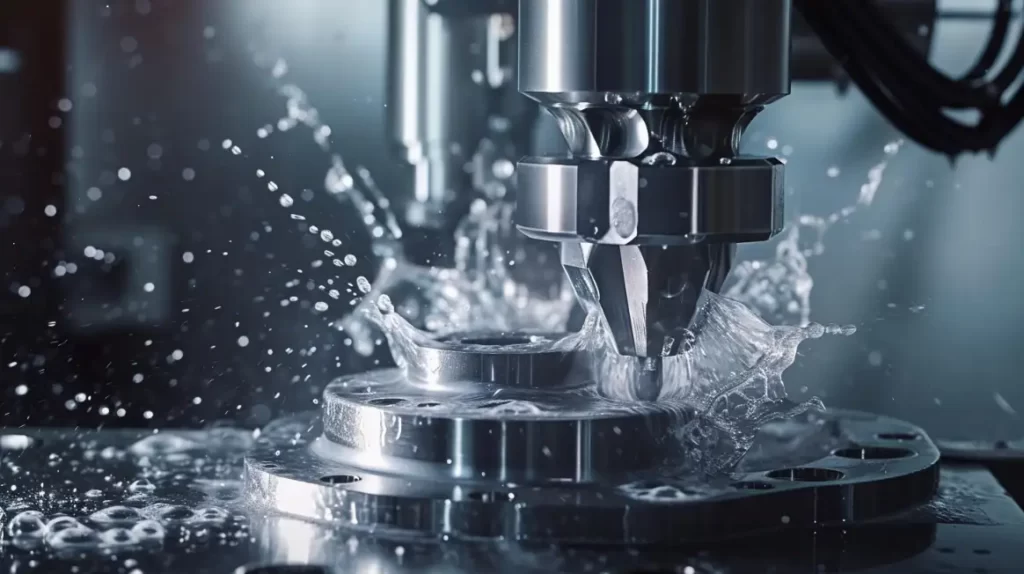
정밀 CNC 기계의 종류
다양한 유형의 CNC 기계 프로젝트에 적합한 기계를 선택하는 것이 중요합니다. 가장 일반적인 CNC 기계를 살펴보겠습니다.
CNC 밀링 머신
CNC 밀링 머신은 회전 공구를 사용하여 공작물에서 재료를 제거합니다. 기계는 공구나 소재를 여러 방향으로 움직일 수 있습니다. 이를 통해 복잡한 모양과 특징을 만들 수 있습니다. CNC 밀링 는 매우 다재다능하고 정확한 결과를 제공합니다.
CNC 터닝 및 선반
CNC 터닝 머신라고 불리는 선반은 절삭 공구가 공작물을 회전시키면서 모양을 만듭니다. 이 방법은 샤프트나 기어와 같은 원통형 부품을 만드는 데 이상적입니다. CNC 선반은 속도와 정밀도로 유명합니다.
CNC 드릴링 머신
CNC 드릴링 머신 드릴 비트를 회전시켜 재료에 구멍을 뚫습니다. 기계가 비트를 공작물 안으로 이동시켜 정밀한 구멍을 뚫습니다. 정확하고 반복적으로 구멍을 뚫을 수 있습니다.
전기 방전 기계(EDM)
일렉트릭 디엠 전기 스파크를 사용하여 단단한 재료를 성형합니다. 기계는 재료를 천천히 제거하여 원하는 모양을 만듭니다. EDM은 복잡한 피처나 단단한 재료로 부품을 만드는 데 이상적입니다.
CNC 플라즈마 절단기
CNC 플라즈마 절단기는 플라즈마 토치를 사용하여 금속을 절단합니다. 기계는 CNC 시스템에 의해 안내되는 정확한 절단 경로를 따릅니다. 플라즈마 절단 은 두꺼운 금속을 절단하고 큰 부품을 만드는 데 탁월합니다.
CNC 정밀 연삭기
CNC 정밀 연삭 기계는 연마 휠을 사용하여 부품을 연마하고 마감합니다. 이 기계는 매끄러운 표면을 만들기 위해 소량의 재료를 제거합니다. CNC 그라인더는 부품을 미세하게 마감해야 할 때 사용합니다.
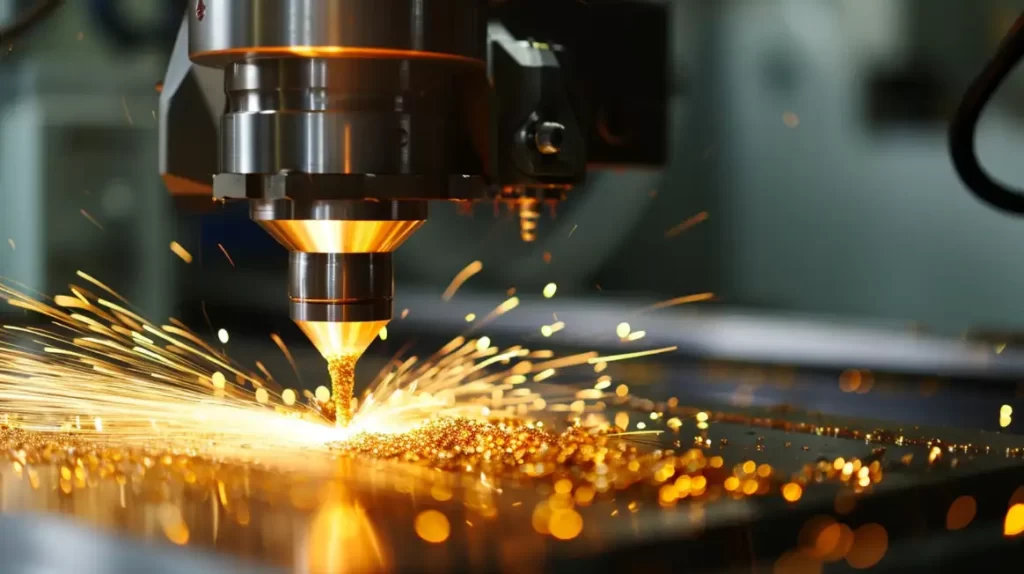
CNC 정밀 가공의 주요 이점
CNC 정밀 가공은 제조 공정을 개선할 수 있는 몇 가지 주요 이점을 제공합니다. 높은 정확도, 빠른 생산 속도, 안정적인 부품 품질을 제공하는 방법을 살펴보겠습니다.
높은 정확도와 정밀도
CNC 정밀 가공은 높은 정확도를 제공합니다. 기계는 컴퓨터의 정확한 지시를 따르기 때문에 사람의 실수가 줄어듭니다. 그 결과 매번 디자인과 완벽하게 일치하는 부품이 만들어집니다.
제작 시간 단축
CNC 가공은 생산 속도를 높여줍니다. 프로그램을 설정하면 기계가 멈추지 않고 작동하여 각 부품을 만드는 데 필요한 시간을 단축할 수 있습니다.
신뢰할 수 있는 부품 품질
CNC 가공은 일관된 품질의 부품을 생산합니다. 자동화된 프로세스는 각 부품이 마지막 부품과 동일하도록 보장하여 결함의 위험을 줄입니다.
프로덕션의 유연성
CNC 기계는 매우 유연합니다. 다양한 재료로 작업하고 다양한 부품을 만들 수 있습니다. 몇 개의 맞춤형 부품이 필요하든 동일한 부품의 대량 배치가 필요하든, CNC 가공은 이를 처리할 수 있습니다.
CNC 가공 재료
성공적인 CNC 가공을 위해서는 올바른 소재를 선택하는 것이 중요합니다. 공정에 사용되는 가장 일반적인 금속과 플라스틱이 프로젝트 결과에 어떤 영향을 미치는지 살펴보세요.
궤조
금속과 합금은 강도와 내구성 때문에 CNC 가공에 일반적으로 사용됩니다. 이러한 재료를 가공하려면 경도를 처리할 수 있는 특수 공구(일반적으로 다이아몬드 코팅 탄화물)가 필요합니다.
정밀 가공에 사용되는 일반적인 금속은 다음과 같습니다:
- 알류미늄: 6061, 7075, 2024
- 강철: 1018, 4140, 1045, A2, D2
- 스테인레스 스틸: 304, 316, 17-4 ph
- 티탄: Ti-6Al-4V
- 구리: C101, C110
- 놋쇠: C360, C260
- 청동: C932, C954
- 인코넬: 718
- 모넬: 400
플라스틱
플라스틱은 열에 민감하기 때문에 가공이 까다로울 수 있습니다. 따라서 금속에 비해 생산 속도가 느립니다. 플라스틱 작업에는 일반적으로 카바이드 절삭 공구가 사용됩니다.
CNC 가공에 사용되는 일반적인 플라스틱은 다음과 같습니다:
- 나일론6, 6/6, 오일 충전 나일론
- ABS
- 폴리카보네이트(PC)
- 폴리에틸렌
- 폴리옥시메틸렌(POM) 또는 아세탈
- PTFE 및 충진 PTFE (유리, 탄소, 청동)
- 폴리에테르 에테르 케톤(PEEK)
- 아크릴(PMMA)
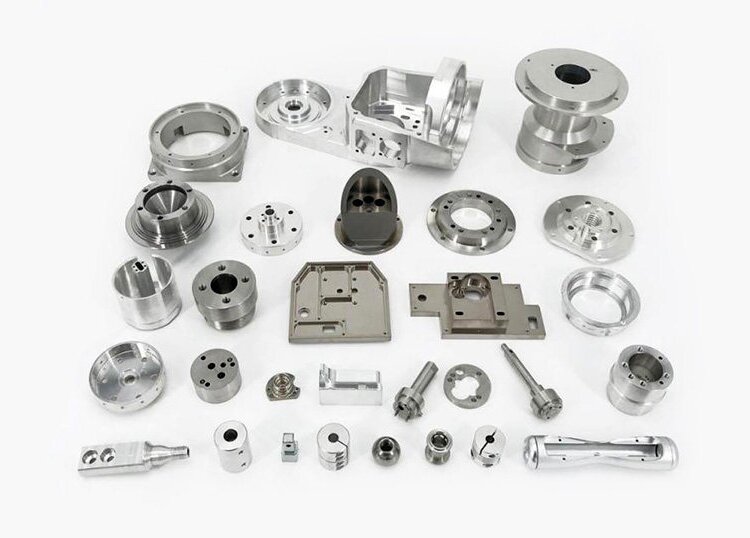
CNC 정밀가공의 응용
CNC 정밀 가공은 많은 산업에서 필수적이며, 중요한 부품에 필요한 정확성을 제공합니다. 이 기술이 산업에 어떤 이점을 제공하는지 알아보세요.
항공우주산업
CNC 정밀 가공은 항공우주 산업에서 매우 중요합니다. 높은 안전 및 성능 기준을 충족해야 하는 부품을 생산합니다. 엔진 부품, 랜딩 기어, 구조 요소와 같은 부품은 정밀한 제조가 필요합니다.
자동차 산업
자동차 분야에서는 CNC 가공을 통해 엔진 부품, 변속기 부품, 맞춤형 피팅을 제작합니다. 이 공정을 통해 공차가 엄격한 복잡한 형상을 생산할 수 있으므로 부품이 완벽하게 맞고 안정적으로 작동합니다.
의료 기기
의료 산업은 수술 기구, 임플란트, 진단 장비와 같은 정밀하고 생체 적합성이 뛰어난 부품을 생산하기 위해 CNC 가공에 의존합니다. 스테인리스 스틸과 의료용 플라스틱과 같은 소재가 일반적으로 사용됩니다.
전자제품 및 소비재
CNC 가공은 스마트폰 부품, 회로 기판, 커넥터와 같은 전자 제품 제조의 핵심입니다. 또한 맞춤형 케이스, 부속품, 장식품과 같은 소비재를 만드는 데도 사용됩니다.
CNC 가공 공차 및 품질 관리
정밀도는 CNC 가공의 핵심입니다. 엄격한 공차가 어떻게 달성되는지 살펴보겠습니다.
CNC의 공차 이해
CNC 가공에서 공차는 부품 치수의 허용 가능한 변화를 의미합니다. 엄격한 공차는 기계 정밀도, 공구 품질 및 재료 특성에 따라 달라집니다. 고급 CNC 기계와 숙련된 프로그래밍 및 보정은 부품이 이러한 엄격한 요구 사항을 충족하도록 보장합니다.
엄격한 허용 오차를 달성하는 방법:
- 고급 보정 기능을 갖춘 고정밀 CNC 기계를 사용하세요.
- 적합한 절단 도구와 재료를 선택하세요.
- 속도 및 이송 속도와 같은 가공 파라미터를 최적화합니다.
- 정확성을 보장하기 위해 정기적으로 장비를 유지보수하고 점검하세요.
CNC 가공의 품질 보증
품질 보증은 모든 부품이 필요한 표준을 충족하도록 보장합니다. 여기에는 가공 공정의 모든 단계에서 엄격한 검사가 포함됩니다.
고품질 출력을 보장하는 방법:
- 캘리퍼스나 마이크로미터와 같은 정밀 측정 도구를 사용하세요.
- 프로세스 중 검사를 수행하여 오류를 조기에 발견하세요.
- 최종 검사를 수행하여 부품 치수와 마감을 확인합니다.
- ISO 표준 및 기타 품질 관리 시스템을 구현합니다.
결론
CNC 정밀 가공은 다양한 산업 분야에서 탁월한 정확성, 속도, 유연성을 제공합니다. 항공 우주에서 의료 기기에 이르기까지 엄격한 공차로 고품질 부품을 보장합니다. 기업은 올바른 재료를 선택하고 품질 관리를 유지함으로써 안정적이고 비용 효율적인 결과를 얻을 수 있습니다.
프로젝트를 한 단계 더 발전시킬 준비가 되셨나요? 문의하기 지금 바로 전문 CNC 가공 서비스를 신청하고 무료 견적을 받아보세요!
안녕하세요, 저는 케빈 리입니다

지난 10년 동안 저는 다양한 형태의 판금 제작에 몰두해 왔으며 다양한 워크숍에서 얻은 경험에서 얻은 멋진 통찰력을 이곳에서 공유했습니다.
연락하세요

케빈 리
저는 레이저 절단, 굽힘, 용접 및 표면 처리 기술을 전문으로 하는 판금 제조 분야에서 10년 이상의 전문 경험을 갖고 있습니다. Shengen의 기술 이사로서 저는 복잡한 제조 문제를 해결하고 각 프로젝트에서 혁신과 품질을 주도하는 데 최선을 다하고 있습니다.

